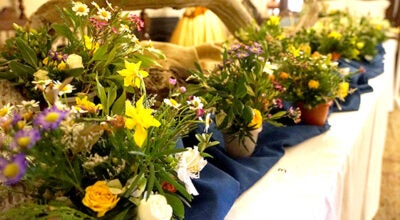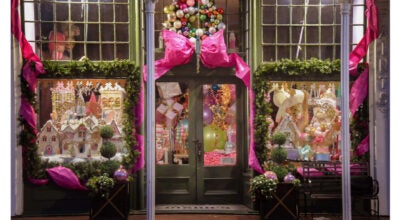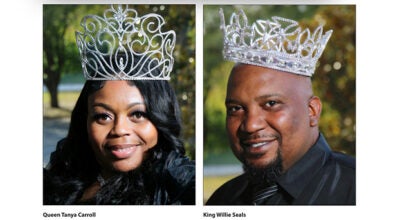Mayweather Hall keeps welcoming laughs
Published 10:16 am Wednesday, March 7, 2012

Natchez Little Theatre actors, from left above, Hoskins Deterly as Avery Randall, Carolyn “Tootsie” Yelverton as Carol Randall and Josephine Jones as Emmeline Randall perform in a 1964 production of “Southern Exposure.” At far left, Jane Stubbs as Emmeline Randall and Lucy Feltus as Penelope Mayweather perform in an early production of the play. At top, a 1967 article on NLT’s “Southern Exposure” appeared in Dixie, the New Orleans Times Picayune’s Sunday magazine. (submitted photos)
Pilgrims and locals catching the satire play, “Southern Exposure,” might note that Penelope Mayweather, between her fainting and fretting over foreclosure and family drama, sure looks good for more than 100 years old.
The middle-aged mistress of Mayweather Hall, Penelope, has been a household stage name for 51 consecutive Spring Pilgrimage seasons at the Natchez Little Theater.
Penelope, along with her quick-witted maid Australia, Yankee author John Salgoud, prestigious Natchezians Carol, Avery and Emmeline Randall and a gaggle of outsider tourists has provided audiences with a fresh of breath laughter to foil the sometimes-stuffy soliloquies of hoop-skirted tour guides.
The play is the only play written by Owen Crump, an Oklahoma-born, one-time Shreveport, La., resident and later turned Hollywood film screenwriter, director, producer and actor. Crump wrote the play in 1949 after touring antebellum mansions during Natchez Spring Pilgrimage.
The long history of the play — which is set in the 1950s, and tells the story of before the 1860s — has since established itself in Natchez, but its beginning was in Dallas and New York City.
According to an article about the play in the 1967 edition of Dixie, the New Orleans Times Picayune’s former Sunday magazine, Southern Exposure debuted in Dallas in 1950 for nine weeks before a brief run on Broadway that year at the Biltmore Theatre in New York City.
It’s debut in Natchez was in 1951.
“I was in high school,” said longtime cast member Carolyn “Tootsie” Yelverton.
But it wasn’t until 1963 that “Southern Exposure” was adopted as an annual tradition.
Yelverton first played Carol in 1964.
For 11 years, Yelverton played the young cousin of Penelope, who helps incite a family scandal by falling for the northern author staying at Mayweather Hall. For Penelope, even housing Salguod was a secret mostly because, besides coming from the North, he also wrote a book exposing secrets of Natchez that was banned locally.
These days, the Natchez Pilgrimage Garden Club promotes and sells tickets to Southern Exposure and touts is as an added attraction to the house tours.
But that was not always so.
“We were not sanctioned by the garden club,” Yelverton said.
While some garden club members attended and even participated in the parody performance of the home tours, others were less supportive.
“They wouldn’t publicize it,” Yelverton said.
Yelverton later went on to play Penelope for 11 more years for a total of 22 years.
Charles Conner Burns, who played Avery Randle for 39 years starting in the 1960s, said nobody could get too uptight about the lighthearted fun the play poked at Pilgrimage.
“It poked fun on Natchez and people that put Pilgrimage on,” Burns admitted.
“But it was true,” he laughed. “That’s the way it was back then.”
Burns said when tourists watch the play, the script has the effect of a déjà vu , as far as the dialogue of tour guides.
Yelverton listed names of some of the esteemed audience members of “Southern Exposure” over the years, which included Gov. Bill Waller, Catwoman actress Julie Newmar and Phillip Morris cigarette advertising icon, Johnny Roventini.
“That was back when cigarettes didn’t cause cancer (in the public mind),” Yelverton said.
Crump, himself accepted an annual invitation at attend three times — but canceled each time, Burns said.
Lynn Mann talked about the timeless dialogue on Monday, as this year’s “Southern Exposure” director Don Vesterse pinned her wig to her head in the dressing room before rehearsal.
“When (Penelope) is talking about the Rosewood furniture, audiences hear those exact lines (on tour),” Mann said.
Mann said Southern Exposure has always produced the biggest audiences.
“It’s our biggest money maker,” NLT Executive Director Layne Taylor said.
Yelverton and Mann remember when busloads of tourists would come through town, and the cast would pull the bus driver on stage to make the tour group have an in-the-moment, “meta” type of experience.
But continuing the same play, at many times with the same cast, has produced bumps in the road that grew bigger over time.
Until the early 2000s, no black actors participated in the play, leaving a white person in the role of maid Australia.
In 2002, the play was canceled after only a few performances when NLT directors decided not to continue using a white actress with black skin tone makeup in the role.
But now, with the integrated cast and audience, the play can continue to delight and poke fun.
With the involvement of Taylor and the emergence of the role of an NLT executive director to summon sponsors and recruit cast members, the show is back on it’s way up, Yelverton said.
“(Taylor) brought us out of the darkness, and we’re still going strong,” she said.
And soon, Burns said, the NLT might have the good problem like they did before a recession in the 1980s — turning away people due to a full house. Back then, they used to line the aisles with extra chairs.
“We (used to have) standing room only,” Burns said.
“It’s the oldest little theater that’s still in existence in Mississippi, and this production really is our meat and potatoes.”
Taylor, who is working on a prequel and hopes to create a sequel to “Southern Exposure,” hopes the long life of the satire and its characters will someday take on a whole knew existence and reach future generations.
Future chapters exposing the world of Mayweather Hall — affairs and all — will hopefully help make Penelope, with her hoop skirts and Rosewood furniture, as timelessly relevant to Natchez during Spring Pilgrimage as azaleas in the spring.





